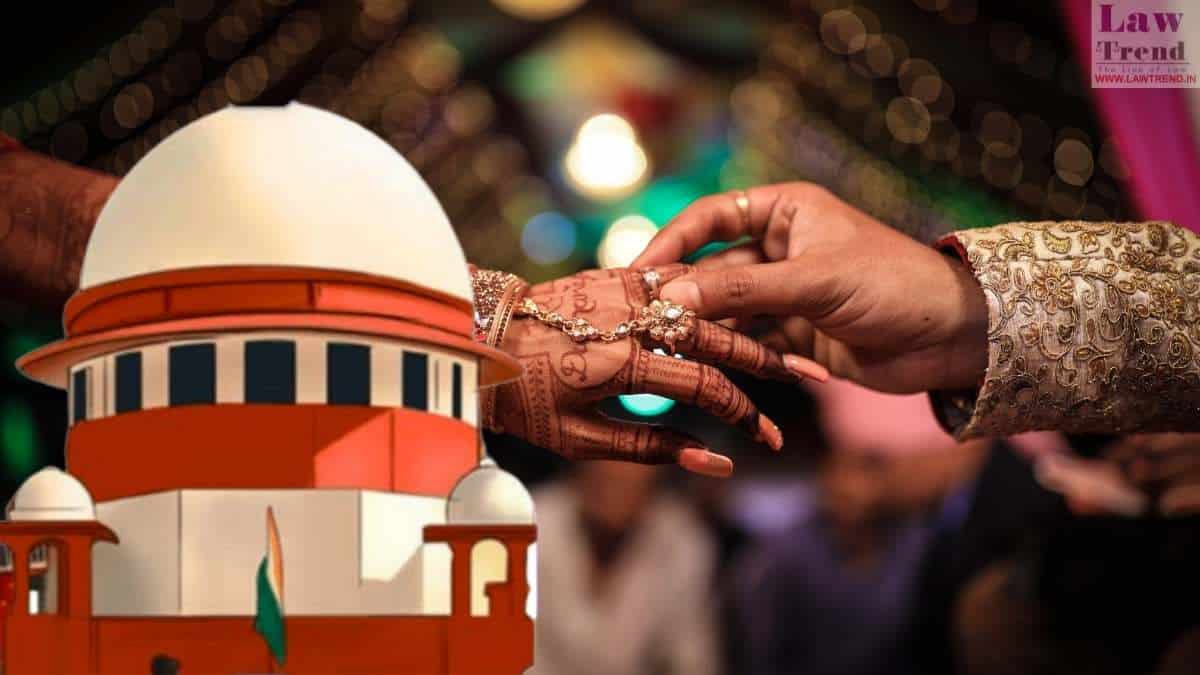
Whether Right to Exit from a Marriage, a fundamental one?, the Supreme Court Constitution Bench was presented with the deliberation by Senior Advocate Indira Jaising .
She argued that the right to the right to exit the union is an extension to right to enter a marriage and would be covered under the right to form associations under Article 19(1)(c) read with the Right to Life and Liberty under Article 21 of the Constitution.
The five-judge bench comprising of Justice Sanjay Kishan Kaul, Justice Sanjiv Khanna, Justice A.S. Oka, Justice Vikram Nath, and Justice J.K. Maheshwari was delaing with the issue of as to whether it could exercise its powers under Article 142 to dissolve a marriage, what were the broad parameters to exercise such power, and whether the invocation of such extraordinary powers was allowed in the absence of the mutual consent of the parties.
Ms. Jaising was appointed along with the amicus curie to assist the Court. She presented the Court with this thought in the opening remarks of the first day hearing. She stressed on the definition of marriage as interrupted and understood by different courts.
Clarifying her objective, she said she is set to first distill the essential components of an ideal marriage, and then determine how to dissolve a marriage that lacked those fundamental elements. Her primary objective in the matter, she stated is to maximise the welfare of the stakeholders, particularly the women and the children."Right to marry is a fundamental right because it is a part of the right to form affiliations. It can be extended to the right to exit the affiliation…Unreasonable restrictions can be a ground to call into question a law", she vehemently argued.
Justice Khanna posed the question to this:
"You basically want to give full autonomy to a person to continue or not to continue…", he asked.
She agreed and elaborated further:
"That is why I have said that the right to enter a marriage and exit one are fundamental rights. There are systems of law where people can get unilateral divorces. Here, there is an intermediary, that is, the court. So we have to figure out the role of the court."
She called on for a limited role for courts in matrimonial disputes, as she contended that their only function was to attempt a reconciliation between the parties in the public interest.
"The court of law can at best attempt reconciliation in public interest and in the best interest of the children. There is already a standard for the grant of alimony…But for an emotional breakdown, there can be no standard. Therefore, if there is an irretrievable breakdown of marriage, it must receive the imprimatur of the court."
She reminded the Court that it had been liberal in past in interpretations to statutes in order to enhance public welfare. It is in this view she argued that if it is in public interest to end marriages then that could not be salvaged as the same would lead to safeguarding the mental health and wellbeing of the parties, and would promote the best interest of the children born out of the union.
Social media is bold.
Social media is young.
Social media raises questions.
Social media is not satisfied with an answer.
Social media looks at the big picture.
Social media is interested in every detail.
social media is curious.
Social media is free.
Social media is irreplaceable.
But never irrelevant.
Social media is you.
(With input from news agency language)
If you like this story, share it with a friend!
We are a non-profit organization. Help us financially to keep our journalism free from government and corporate pressure.












0 Comments